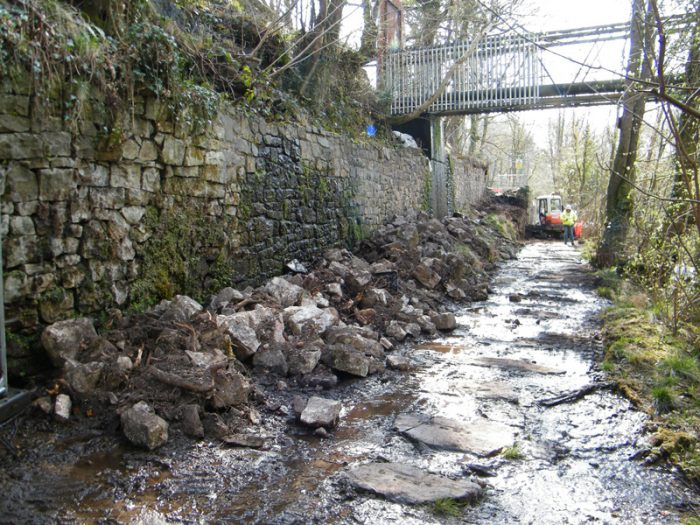A program of detailed surveying, monitoring and investigation of the Gurnos Quarry Leat and Tramway, Cyfarthfa, a nationally important historic monument, was carried out for Merthyr Tydfil Council in advance of, and during, restoration works at the site.
The leat and tramroad date to the 1790s and were built by Richard Crawshay, ironmaster of Cyfathfa Ironworks, to supply limestone to the blast furnaces and the water necessary to drive the huge waterwheel ‘Aeolus’ that powered them . The tramroad was originally built as a railroad, with edge rails along which waggons with flanged wheels would have run. Sometime in the early 1800s the railroad was converted to a tramroad, or plateway, with L-shaped plates set onto the sleeper stones. The leat appears to have been built at the same time as the original railroad and followed the same route, albeit one elevated above the railway. The southern end of the feature fed into the Gwynne Water Aqueduct. The leat remained in use as a water supply for Aeolus until the mid-1800s when it was diverted to feed the lake in front of Cyfarthfa Castle.
The survey was carried out under Scheduled Monument Consent and recorded numerous features, including 731 in situ sleeper stones along the length of the tramroad, most of which displayed wear marks from the century or so of heavy use. During the work, the remains of a building depicted on the 1875 OS map were revealed on the eastern side of the tramroad, along with a stone engraved with a ‘G’ adjacent to this building.
A watching brief was carried out during works to reconstruct and re-line the leat. This revealed identified multiple episodes of repair to both the leat and tramroad, including small-scale and substantial rebuilding of the walls, relining of the base, and the installation of pipes.
A detailed report was produced for the client, which included a DVD containing the extensive plan and photographic records made during the work.



